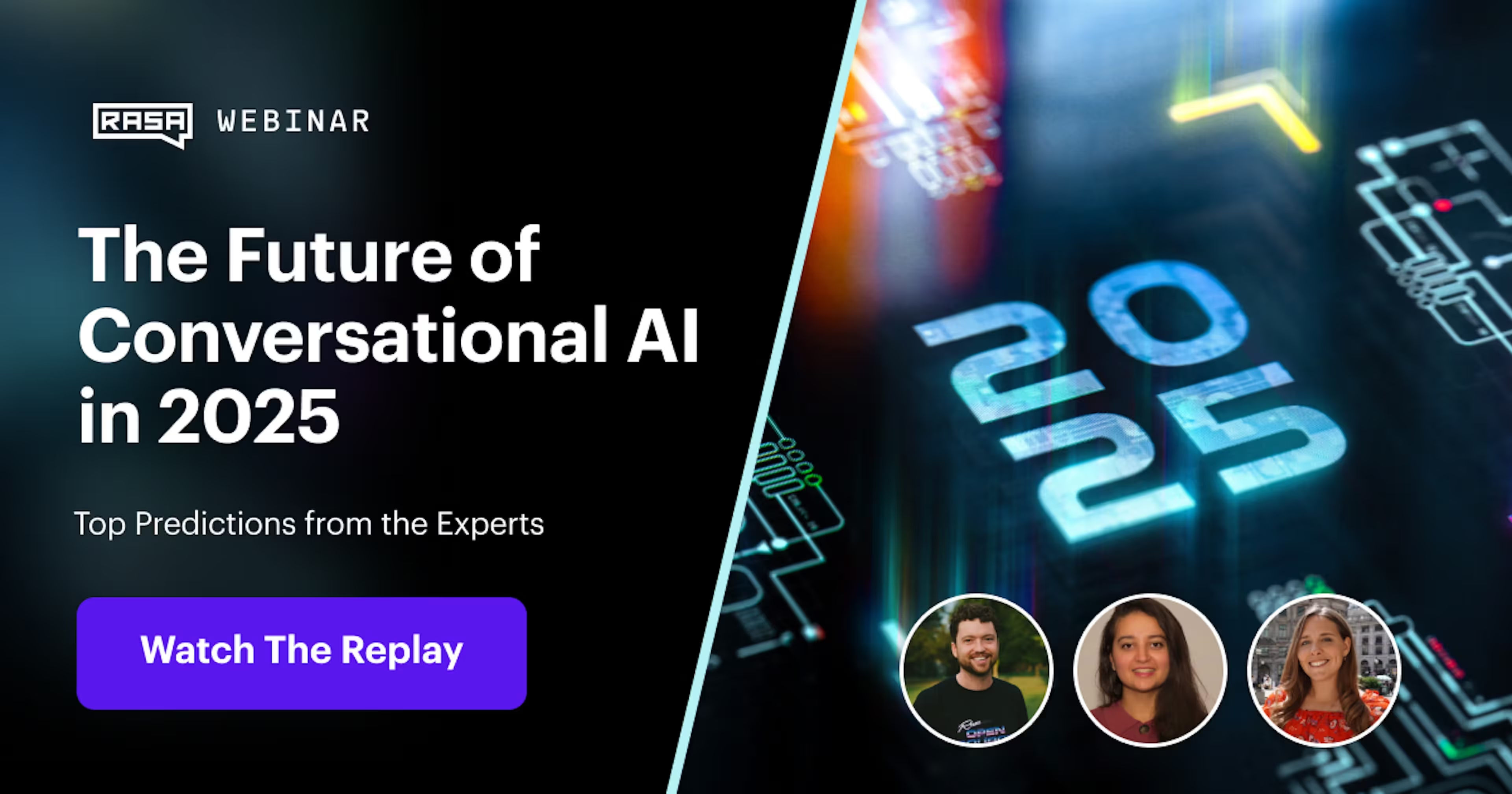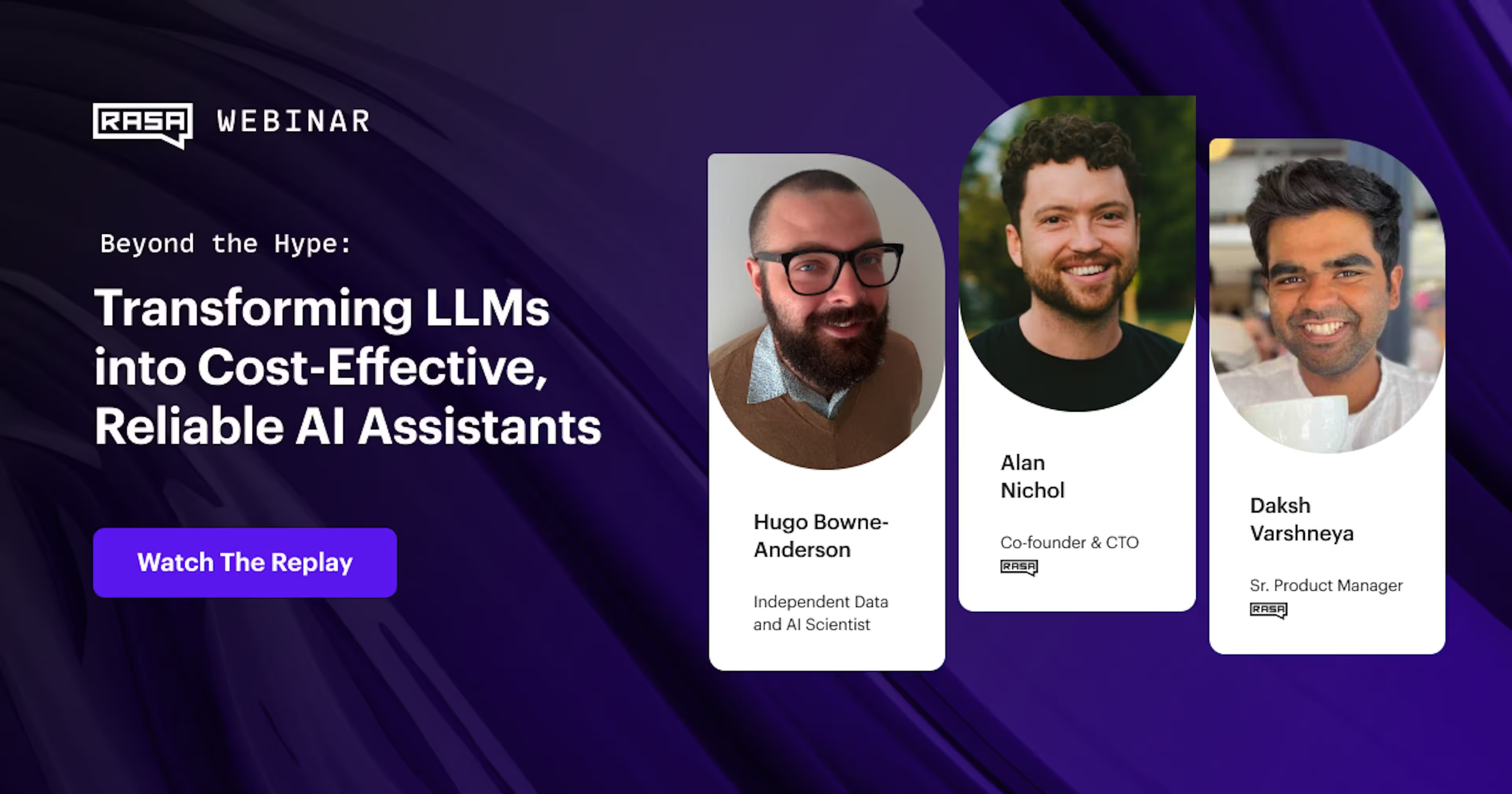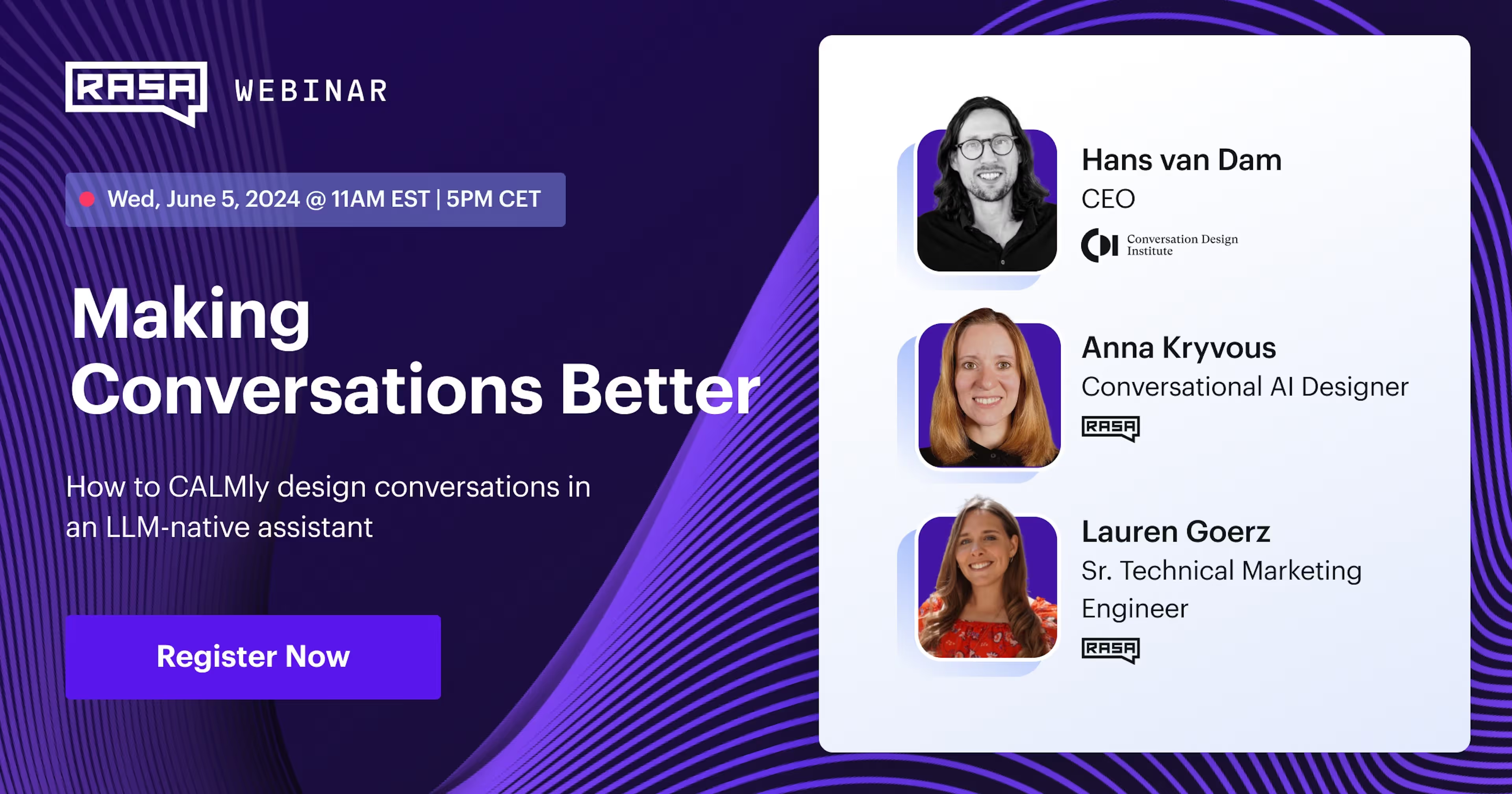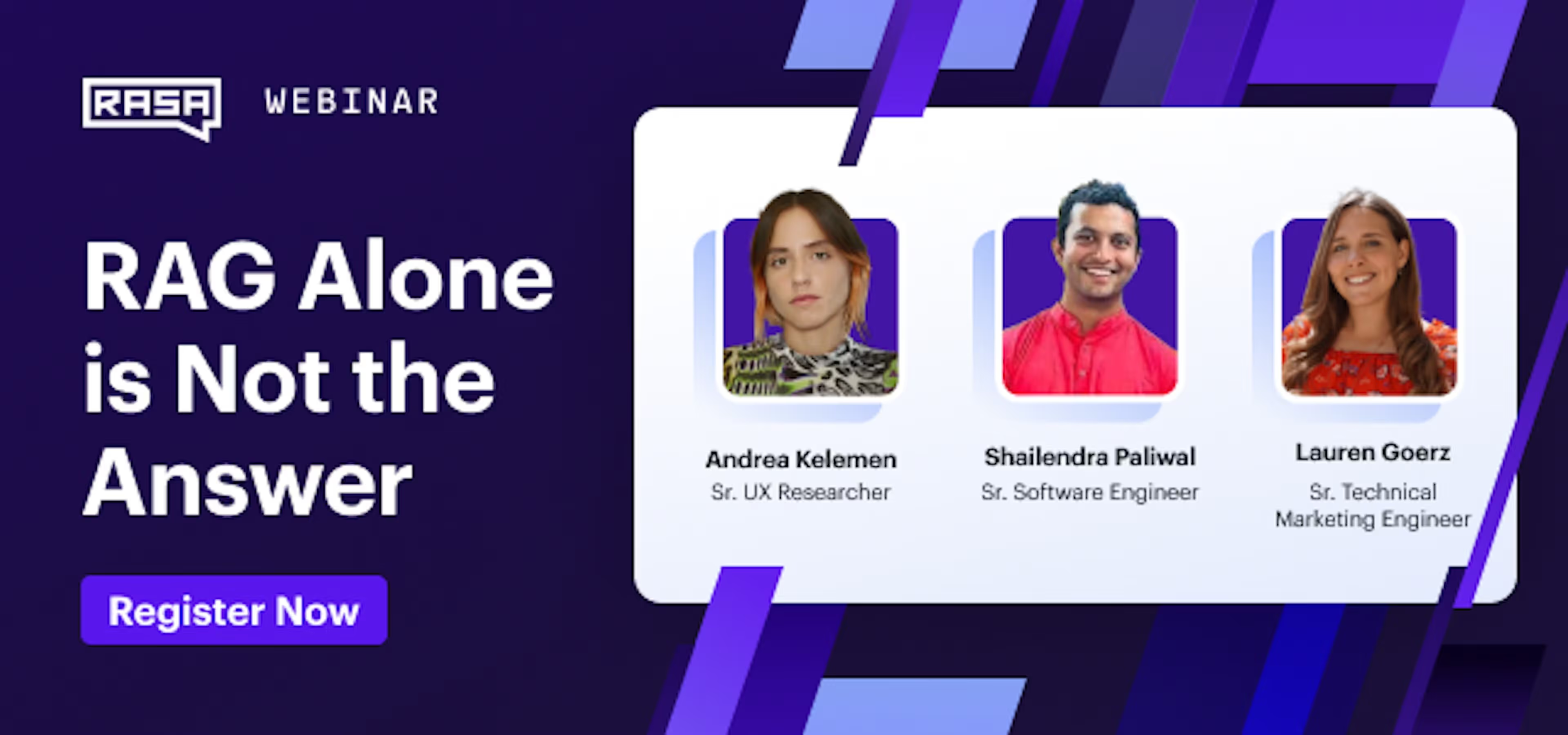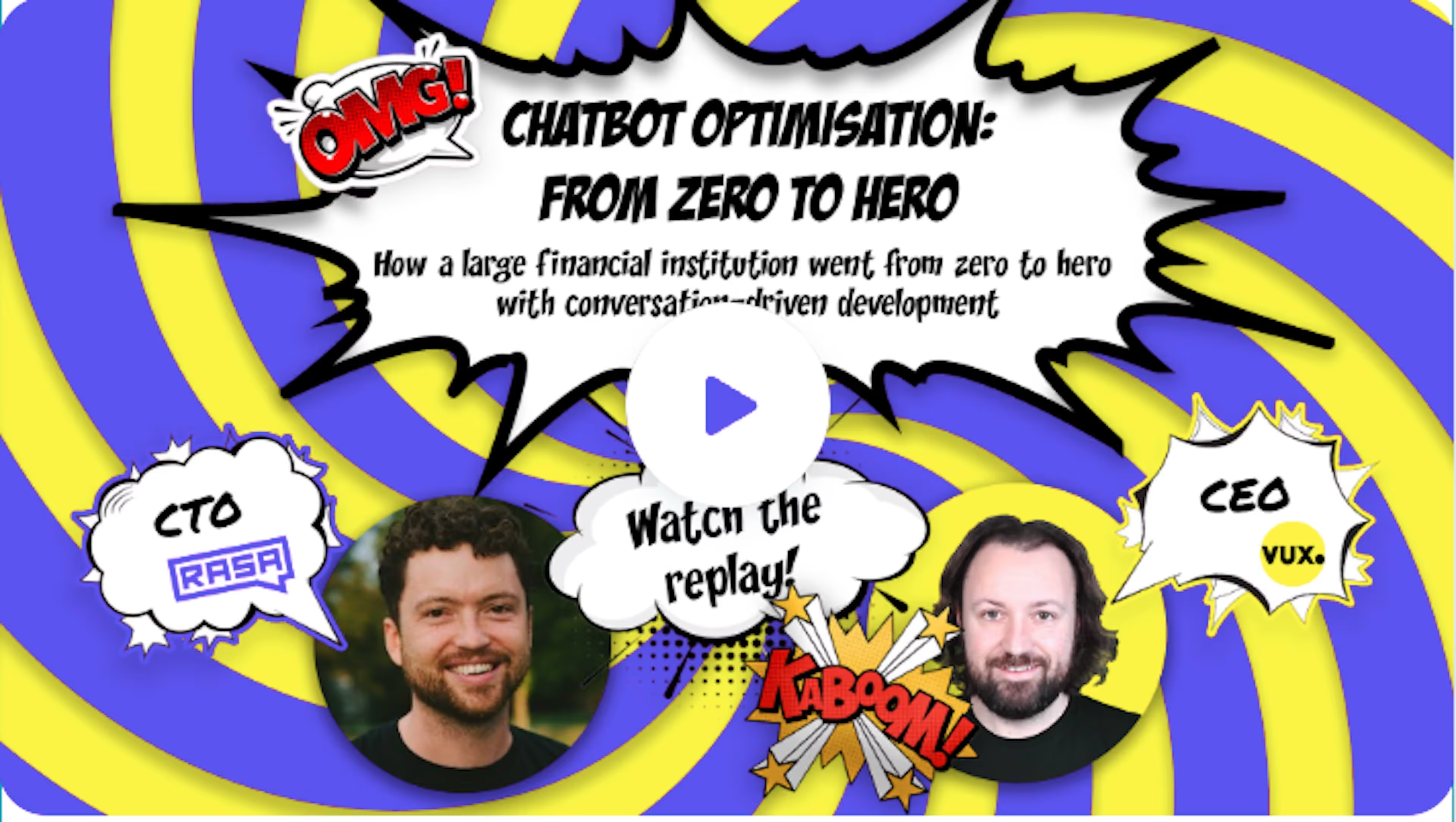Rasa Events
Join us in-person, digital, hybrid, or our online events, to connect, learn, and lead.

Upcoming Events
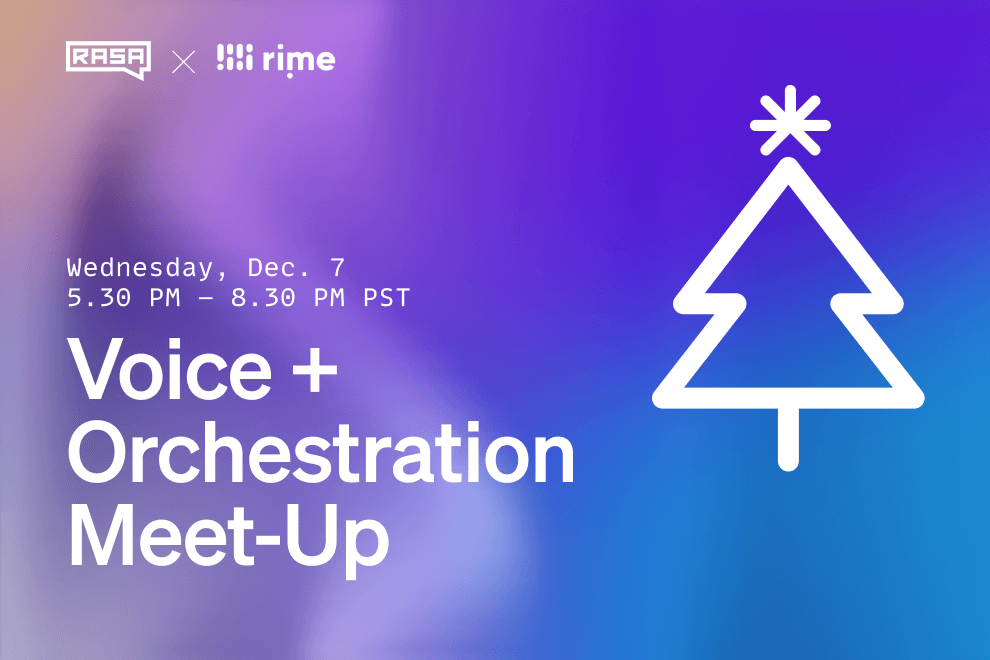
🎁: Unwrap the Future: Voice & Agent Orchestration with Rime + Rasa
Autodesk Reduces Customer Support Costs Through CALM
Join us on Wednesday, December 17th as Rasa and Rime AI explore how orchestration is becoming the critical layer for enterprise AI, and how voice is changing the way users interact with it.
Past Online Events
Available On-Demand
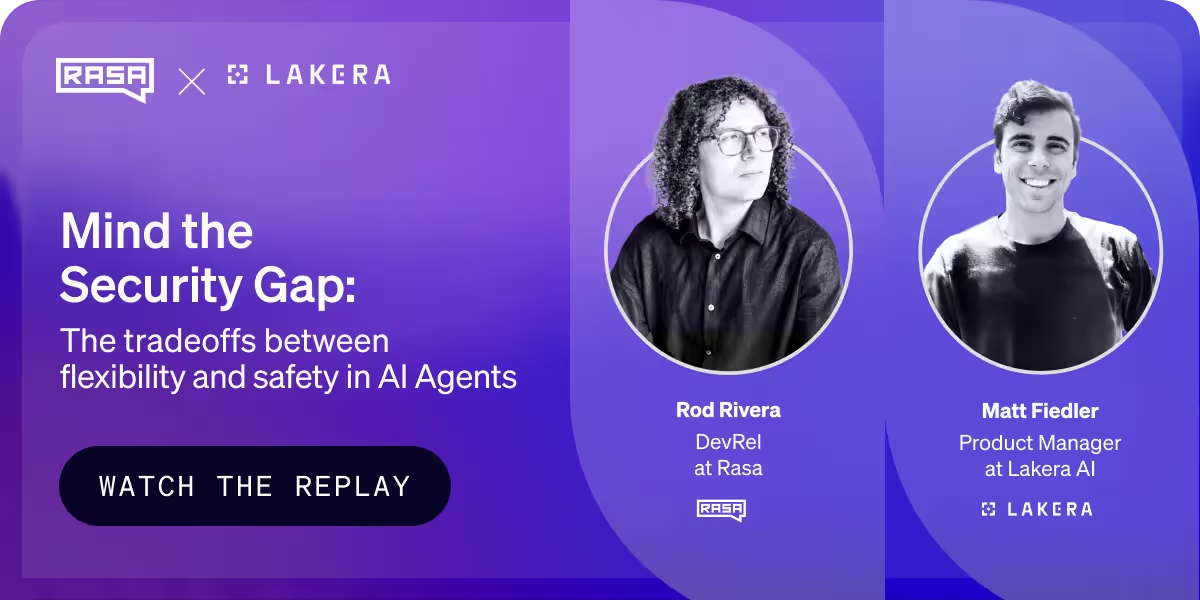
Mind the Security Gap: The tradeoffs between flexibility and safety in AI Agents
Join Rod Rivera, Rasa DevRel, and Matt Fiedler, Lakera AI Product Manager, to examine how different AI agent architectures perform under security testing and why each impacts security outcomes differently. This online event is ideal for AI architects, security professionals, and business leaders who want to understand the security implications of deploying conversational AI strategies for customer interactions.

Rasa Orchestration Series: Context Engineering for MCP
MCP (Model Context Protocol) is quickly becoming the backbone for connecting agents, tools, and context. In this session, we’ll identify how MCP adds tangible value, how it changes the way agents communicate, and what common design patterns are emerging. We’ll also look at context engineering in practice: why context isn’t just “stuffed into a prompt,” but must be dynamically generated, shaped, and routed.
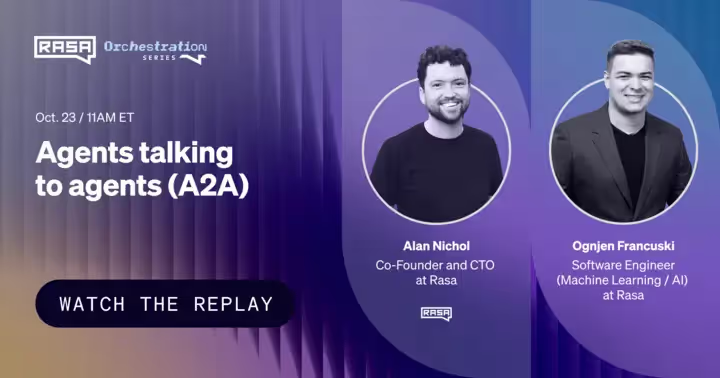
Rasa Orchestration Series: Agents talking to agents
A2A provides a standard way to plug external agents into assistants as “black boxes” while still keeping the conversation smooth, contextual, and coherent. In this session, we’ll break down how Rasa uses A2A to let your assistant borrow skills from external specialized agents, when this approach makes sense (and when it doesn’t), and what design patterns actually work in production.

Voice AI Unlocked: The Tech Powering Next-Gen Enterprise Support
Join Rasa Staff Resident AI Engineer Souvik Ghosh and Cartesia's CEO Karan Goel for an exclusive deep-dive into the future of enterprise Voice AI. Watch real-time demonstrations of breakthrough voice technology that's transforming customer experience in banking and telecommunications.
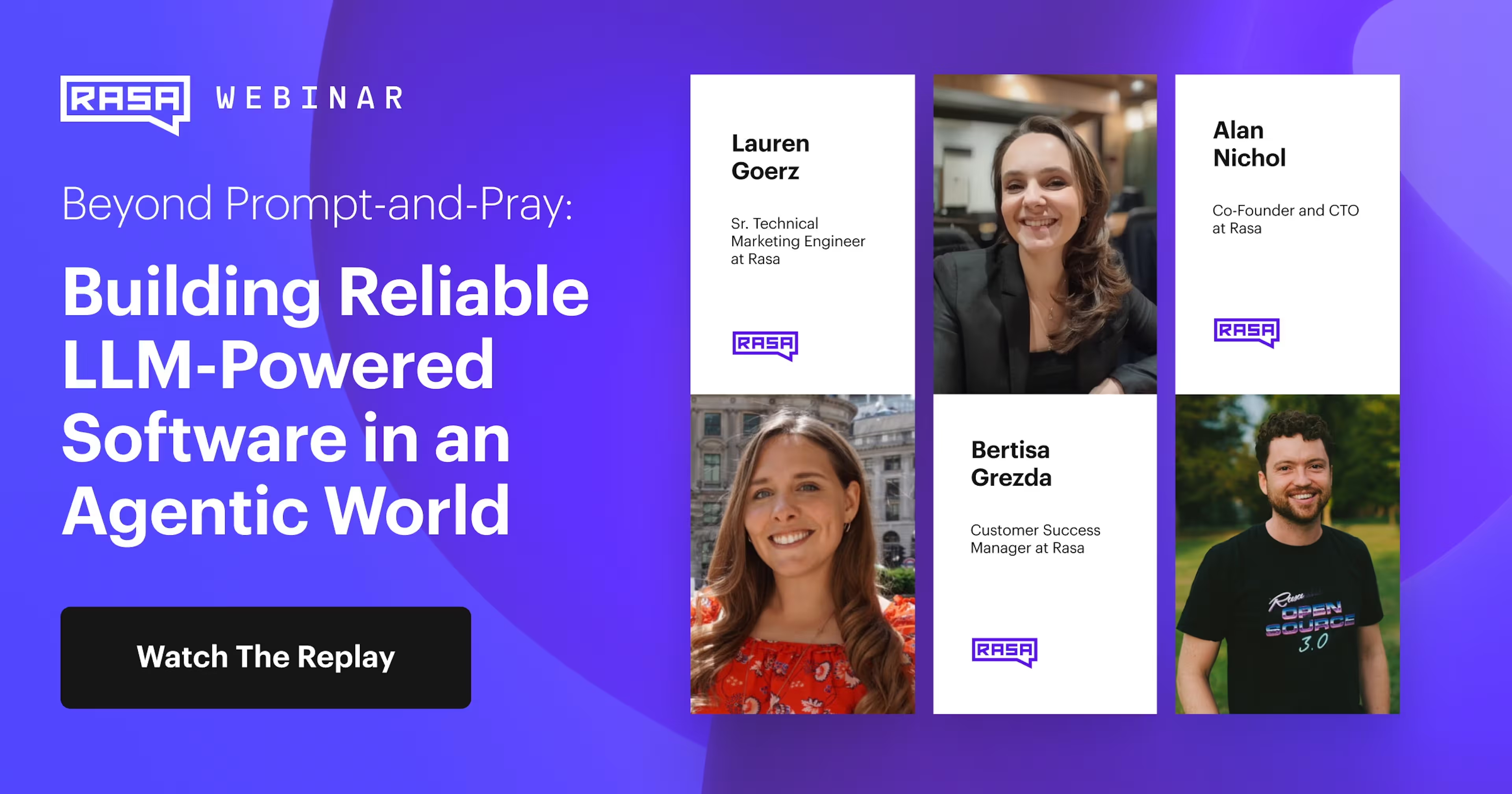
Beyond Prompt-and-Pray: Building Reliable LLM-Powered Software in an Agentic World
Join Alan Nichol, Rasa Co-Founder and CTO, Lauren Goerz, Sr. Technical Marketing Engineer, and Bertisa Grezda, Customer Success Manager, to learn how leading companies are moving beyond the risky "prompt-and-pray" methodology to develop reliable, secure, and scalable AI systems.
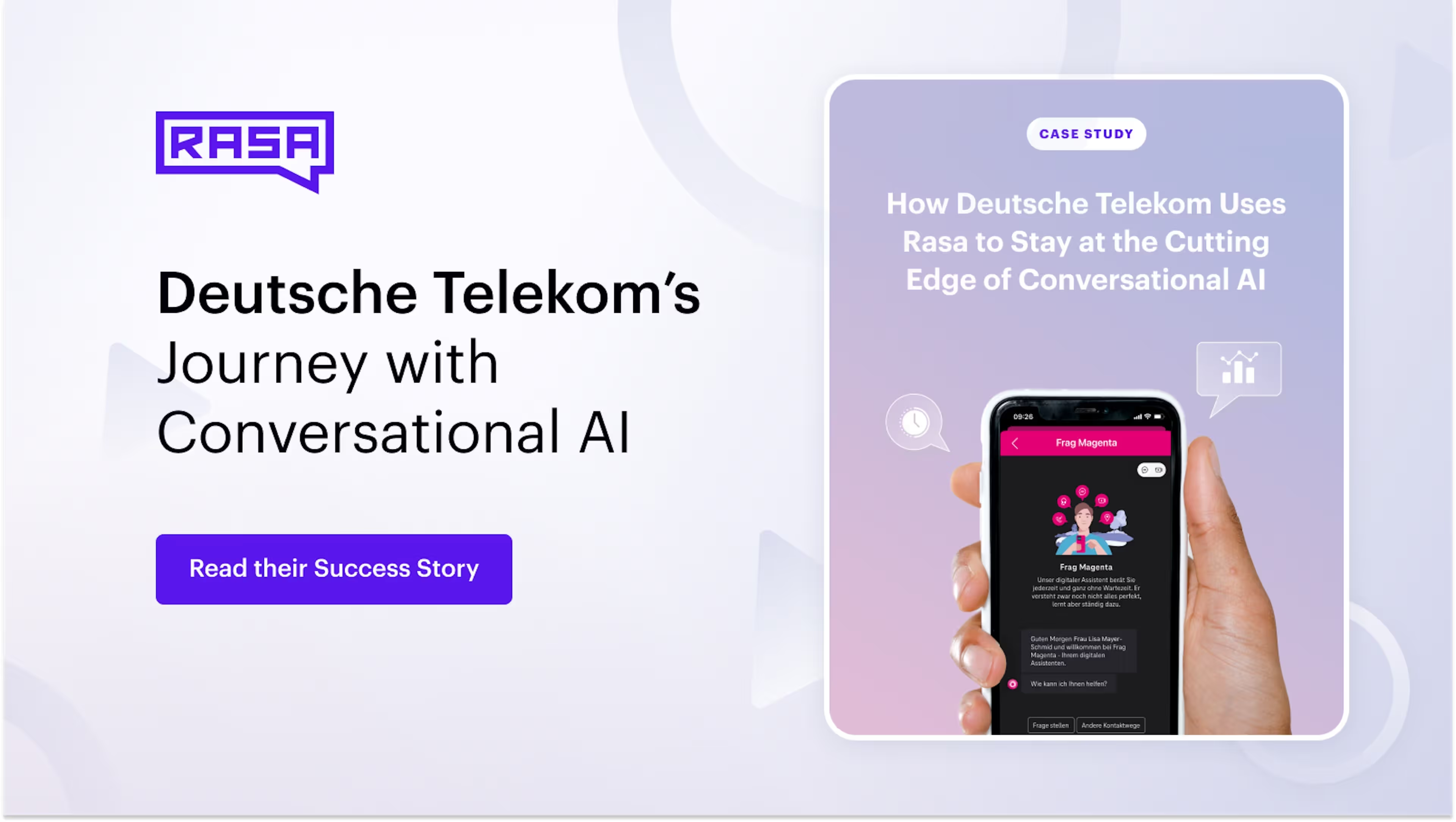
How Deutsche Telekom IT went from 0 to 100 Flows with Rasa CALM
Hear how Deutsche Telekom's team achieved remarkable results by leveraging Rasa's comprehensive framework through implementing sophisticated early response procedures for incident management, integrating subject matter experts into the development process, and balancing cost control with performance optimization.
AI that adapts to your business, not the other way around
Build your next AI
agent with Rasa
Power every conversation with enterprise-grade tools that keep your teams in control.

